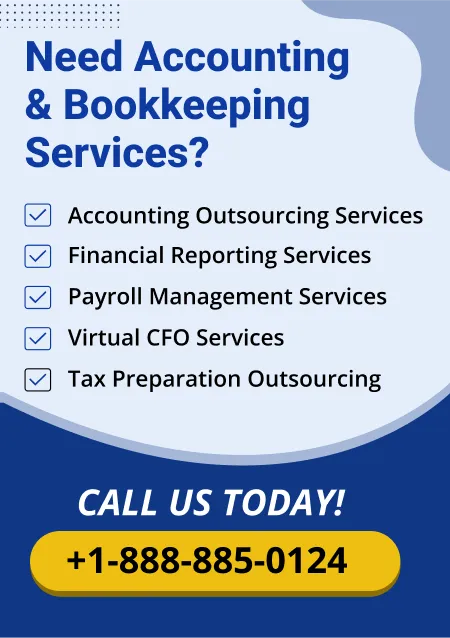Applying the new lease accounting rules correctly 842 will be a sea change for U.S. restaurants. Not only are the new rules changing how companies book leases, but ultimately, it could affect their financial reporting. Understanding and implementing ASC 842 can be challenging, especially for smaller establishments. By taking key steps and availing of proper Restaurant Accounting Services, US restaurants can make the transition seamlessly without disrupting daily operations.
What is ASC 842 Lease Accounting?
ASC 842 represents new standards promulgated by the Financial Accounting Standards Board, FASB, with an implicit aim of implementing increased transparency in lease accounting. Whereas earlier organizations did not have to book all but a very few leases on the balance sheet, that is now different under ASC 842 lease accounting. This change has become highly pivotal for restaurant businesses, considering that most restaurants operate within a leasing framework.
-
ASC 842 requires Leases to be reported on the balance sheet.
-
It enhances the transparency in lease finance to stakeholders.
-
The restaurants will report both the short-term and the long-term leases.
Why is it important to understand the new Lease Accounting Standards?
Adopting new lease accounting standards is more than a compliance matter. The change for restaurants presents an opportunity to enhance financial reporting, budget planning, and overall efficiency. Done right, restaurants will avoid penalties while reducing risks related to incorrect financial reporting, and they will provide more accurate financial information for stakeholders.
-
Increases finance transparency.
-
Facilitates appropriate budgeting and financial planning.
-
Reduces compliance-related risks and penalties.
How do restaurants comply with accounting for leases under ASC 842?
Compliance with the new accounting for leases adopted by ASC 842 may seem like a headache, but in reality, one can take each step slowly and make it easier. Here is a guide for restaurants.
Inventory and Analyze Current Leases
It is a process to be initiated with a review of all the existing leases. Whether it be a lease for kitchen equipment or a property lease, identification of those should be done. These are required to be classified as operating or finance leases. Restaurants should understand what the terms of the lease are,including the payment schedules and options for renewal.
Classify Leases Under ASC 842
Under ASC 842, there are two types of leases: operating and finance leases. Finance leases include ownership transfer criteria among others, while operating leases are normally treated more as some sort of rental agreement. Proper identification of lease classification will ensure appropriate accounting.
Record the Leases on the Balance Sheet
Restaurants must now reconcile operating and finance leases on the balance sheet by adding ROU assets and lease liabilities. Modifications and early terminations in lease terms also need to be tracked.
Leverage Restaurant Accounting Services
For many restaurant businesses, the implementation of ASC 842 can be resource-intensive. Most of them implement the transition in concert with Restaurant accounting services. These services provide correct classification and reporting and maintain ongoing compliance with ASC 842.
-
Review and analyze the currently active leases.
-
Categorize active leases into either operating or finance leases.
-
Accrue the lease liabilities and ROU assets on balance sheets.
-
Collaborate with specialists to ensure seamless adoption.
What are the Common Challenges Faced by U.S. Restaurants?
Transition to New Lease Accounting Standards isn't exactly plain sailing. Common challenges faced by many restaurants in the United States include but aren't limited to:
Complex Lease Arrangements: Most restaurants operate under leases for equipment, real estate, and vehicles.
Data Management: In the absence of a proper system, lease data might get out of hand, especially in multi-location businesses.
Cost of Compliance: For small restaurants, compliance costs regarding ASC 842 might be too high or a greater financial burden. Overcoming these issues can best be availed through restaurant accounting professional services.
-
Complex lease structures further complicate classification.
-
Lease data management can be cumbersome.
-
Smaller restaurants may find compliance costs prohibitive.
Why Fino Partners for Restaurant Accounting?
Fino Partners provides specialized Restaurant accounting to help businesses adapt to the requirements of ASC 842 lease accounting. A team of experts at Fino Partners will ensure that U.S. restaurants can continue their operations by concentrating on their daily activities without compromising conformity with new lease accounting standards. From lease analysis to ongoing compliance, they take care of everything and make the transition seamless and cost-effective.
How it works: From lease compliance to financial reporting, rely on the expertise of Fino Partners to provide restaurants with comprehensive accounting services got your back!
Conclusion
Accounting for ASC 842 lease adoption is indispensable to U.S. restaurants in their quest to meet the expanding world of financial regulations. Though this might appear to be an overwhelming task, the transition can be well and smoothly effected with a little forethought in planning, appropriate lease classification, and restaurant accounting services support. The following steps would ensure a systematic change while maintaining much operational efficiency and accuracy in finances.
READ ALSO | Top Accounting Challenges Faced by Restaurants and How to Outsource Solutions



























